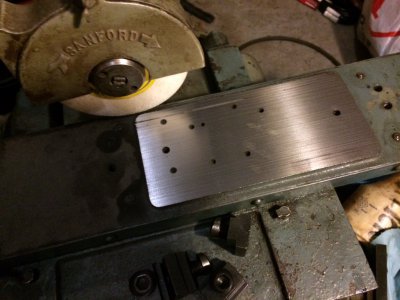How can you grind the table? Do you mean to grind the table IN SITU?? Does the grinder have enough travel to completely clear both ends of the table?
I'd advise just stoning off the high spots and dings as suggested. I use a file rather than a stone myself. If you look down a flat,ordinary file,they are seldom flat. They have a little bend in them. Use the convex side of the file to file off the dings. Some files are S shaped rather than simply curved. I reject them except for ordinary file work where the warp doesn't matter. Back when you could buy a file UNWRAPPED,I rejected them out of hand. Now,the blasted things come in plastic so you can't see their warp. And,the Mexican Nicholson files are soft as butter. I hope some day they figure out how to not let them decarb while hardening them. You can take an OLD USA file,and easily file the corner right off a Mexican Nicholson. After about 1/32",you finally hit he hard core. But,the teeth are very soft.



 I've done the same thing too many times. I'm getting ready to do a full CNC conversion on my DoAll, no more cranking!!
I've done the same thing too many times. I'm getting ready to do a full CNC conversion on my DoAll, no more cranking!!